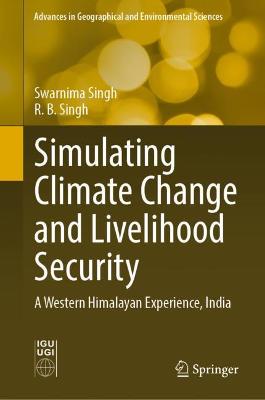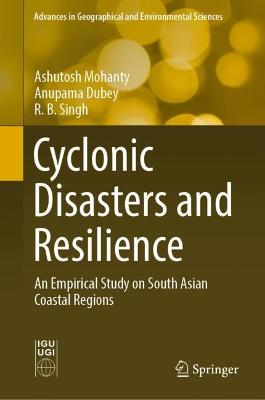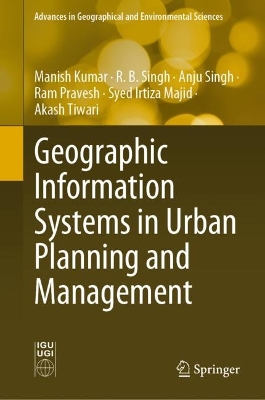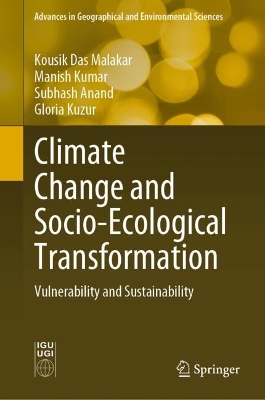Advances in Geographical and Environmental Sciences
5 total works
Simulating Climate Change and Livelihood Security
by Swarnima Singh and R. B. Singh
Cyclonic Disasters and Resilience
by Ashutosh Mohanty, Anupama Dubey, and R. B. Singh
The Bay of Bengal is prone to tropical cyclones and storm surges as a result of its location, and many of the mostly poor people living along the coastal regions of South Asia lose their lives almost every year. These disasters have been particularly devastating and have caused serious damage. During the past five decades, the low-lying coastal and offshore islands have experienced a tragic history of 50 severe cyclones and storm surges, with more than one million victims dead or missing. People accepted and waited for the next disaster as they had no alternatives. Members of the poor families who survived the disasters experienced hard times recovering from damage and the loss of their loved ones. After disasters, epidemic diseases arise in the affected areas. Many of the people in distress are also deprived of public services. Providing all sorts of assistance and emergency health preparedness are most essential to overcome such a situation. The causes of these huge casualties have been mainly: (1) the high population density of costal settlements, (2) inadequate cyclone shelters in the disaster risk areas, (3) lack of awareness of the disaster risk by the vulnerable population, (4) deterministic attitudes of people who accept disasters as “fate”, (5) houses that are weakly constructed and (6) underdeveloped central awareness programmes and weather forecast systems.
This book is based on an empirical study presenting a timeline analysis of major cyclones and their impacts and consequent losses through the super-cyclones in the disaster-prone coastal regions of India, Sri Lanka and Bangladesh. This study also investigates resilience mechanisms based on early warning systems, technology applications including GIS and remote sensing, best practices, success stories and case studies that can be used for effective cyclone management and development of a resilience mechanism among coastal communities.
This book presents a complete set of studies of alluvial fan sediments in southern Iran from the point of view of sedimentology, sedimentary geochemistry, tectonics, economic geology, groundwater, geomorphology, hazards and telemetry. In addition, the book focuses on advanced topics and theory, which practically serves as a model for the study of this type of sediment around the world.
Alluvial fans are an important and fundamental factor in many sciences such as geology, environmental science, natural hazards, groundwater science, agriculture and many other related sciences. Lack of accurate knowledge of their constituent sediments has always been an important problem for experts in many science disciplines. From the economic point of view, the identification of alluvial fan deposits is of particular importance. For example, alluvial deposits are the centre of groundwater accumulation, and most groundwater reservoirs within the sedimentary basin are fed by water from alluvialdeposits. Most of the gold production in South Africa has been formed as placer deposits in ancient alluvial fans. In addition, a large amount of uranium placer deposits is extracted from old alluvial fans in sedimentary basins in South Africa. This book serves as an ideal guide for experts in earth and environmental sciences and hydrology.
Geographic Information Systems in Urban Planning and Management
by Manish Kumar, R. B. Singh, Anju Singh, Ram Pravesh, Syed Irtiza Majid, and Akash Tiwari
Geographic Information Systems (GIS) play a pivotal role in the field of urban planning and management and provide better solutions for numerous urban problems. With GIS, one has the ability to better understand existing requirements of a city and its design to fulfill those needs.
This book contributes to developing scientific knowledge based on geospatial technologies among planners, researchers, scientists, professionals, students, and laymen and providing them with better understanding for urban planning and management at various levels. The book manifests the importance of GIS in better understanding of current urban challenges and provides new insights on how to apply GIS in urban planning. It also encourages the various stakeholders of society to participate in the decision-making process and assists planners and authorities to formulate suitable plans for sustainable urban growth of a region.
The book is divided into two parts. The first part describes thefundamental concepts of GIS and also deals with the advanced techniques of spatial planning. The second part addresses real-world case studies using various applications of GIS. The case studies include urban land-use changes, simulation of future urban growth, urban heat island, alternate landfill site selection and urban flood susceptibility mapping, among others. This book shows how to integrate GIS with remote sensing, geostatistics, artificial intelligence-machine learning techniques, and other cutting-edge technologies. Readers find this book to be an invaluable resource for understanding and solving problems relating to sustainable urban planning and management.
Climate Change and Socio-Ecological Transformation
by Kousik Das Malakar, Manish Kumar, S. C. Anand, and Gloria Kuzur
This book focuses on various psycho-social and socio-physical aspects of climate change and includes a wide range of case studies. Included topics are notable climate-related social thinking; climate vulnerability; transformation in socio-ecological subsystems; bioclimatological, urban bioclimatological and socio-bioclimatic ideas; disasters; policy instruments; climate justice; human rights; and sustainability. The book distinguishes itself from similar works by including a wide variety of topics and assists policy management in the current and upcoming climate crisis era. This book also addresses the Sustainable Development Goals 13 (Take Urgent Action to Combat Climate Change and Its Impacts), highlighting resilience, recovery potential and adaptive capacity, climate change measures integrated into policies and planning, and knowledge and capacity to mitigate climate change.
The ideas covered in this book evolved in response to the current climate crisis, ideas that the authors believe will aid in societal management and development in the present and future. The book is a useful source for planners, geographers, professionals, academics, government officials, laypeople, and others interested in climate change.




